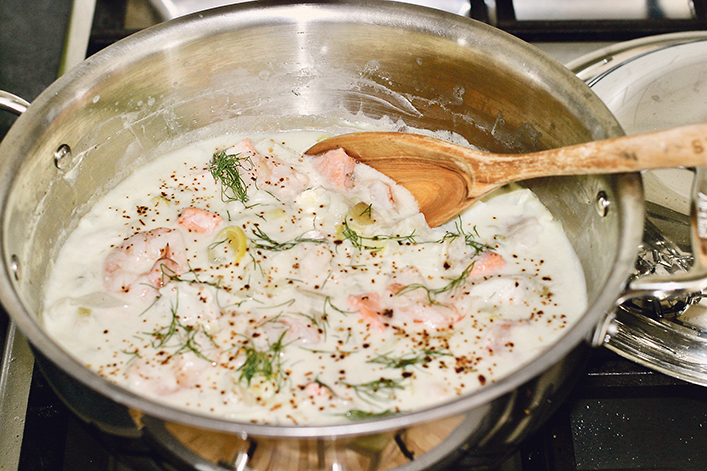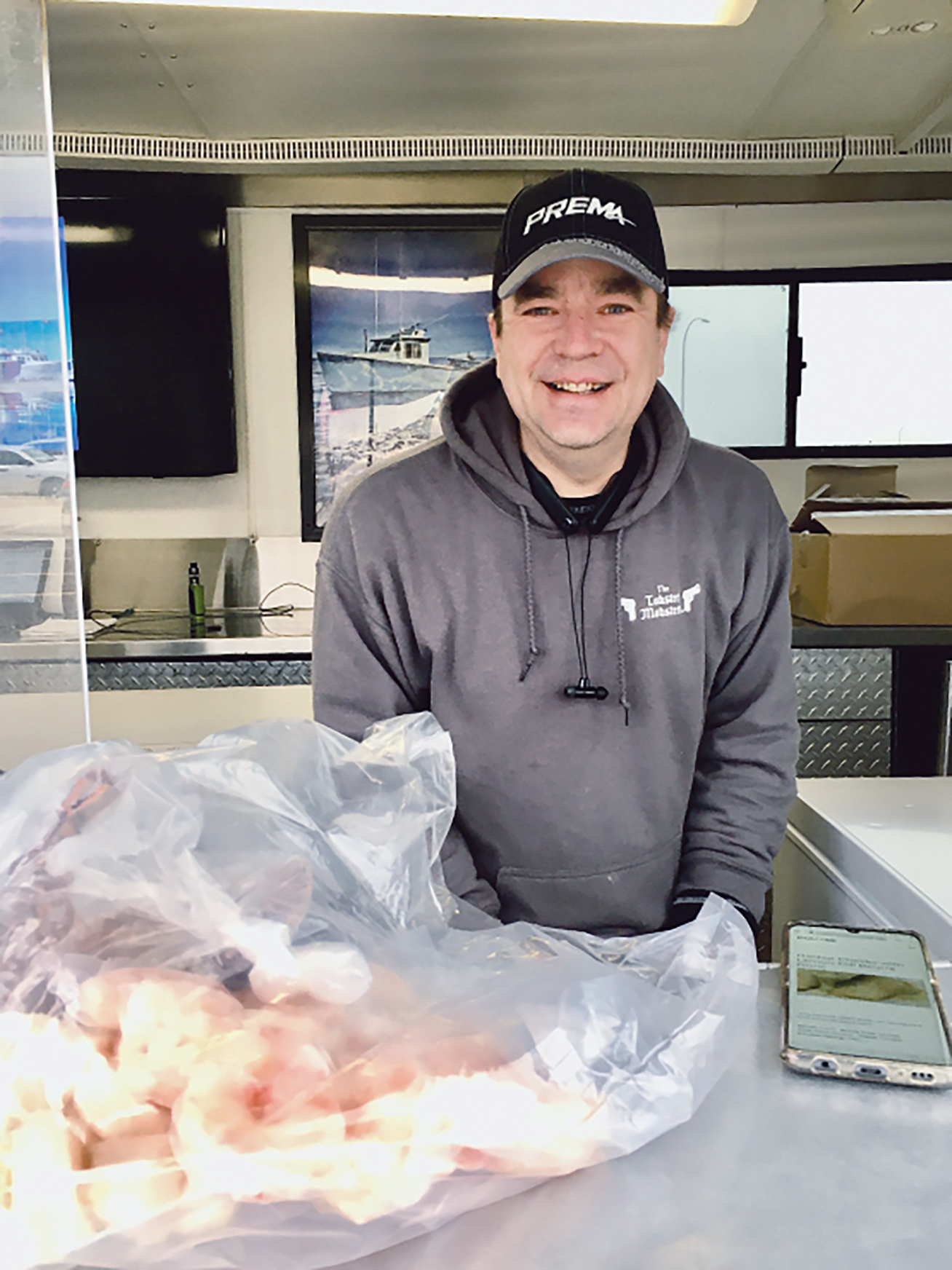Seafood is a traditional Christmas Eve dinner in many families. However, if you live outside the larger cities on the Prairies, good quality seafood may be difficult to come by.
Brothers Devin and Colby Campbell began to realize this when friends and family asked them to use their contacts in the Maritimes to ship in seafood.
Originally from eastern Prince Edward Island, they know a thing or two about seafood.
In 2015 they started their business by selling at farmers markets. Now they have two locations in Alberta — Brooks and Nisku — and have three trucks that travel throughout the Prairies to 150 smaller cities and towns. That is how I came to know about them.
Read Also

Mail strike disrupts grain sample delivery
The Canadian Grain Commission has asked farmers to consider delivering harvest samples directly to CGC offices, services centres or approved drop offs as Canada Post strike delays mail.
I marked the calendar and checked the date often so as to not miss my chance to buy seafood before Christmas on their Swift Current stop. I was concerned there would be a line up and arrived at opening time. Fortunately, it was quiet and I had a chance to chat with Rob Lucas, their only employee.
The Lobster Mobsters, that’s their company name, specialize in Atlantic fish and seafood. I bought haddock cheeks for my first time and Rob quickly pulled out his phone and found the perfect recipe for me. And he asked, by the way, how do you know about haddock cheeks?
Their website tells their story, has a menu of offerings and a calendar for their deliveries from Crowsnest, near the Alberta-British Columbia border to Brandon, and everywhere in between. I can vouch that their seafood is as fresh as they say.
Lemon Caper Linguine with Scallops
3/4 lb. linguine 365 g
3 tbsp. olive oil 45 mL
5 cloves garlic minced
1 – 3.5 oz. jar small capers 100 g
2 tbsp. lemon juice 30 mL
salt
Bring a large pot of water to a boil and salt liberally with one to two tablespoons (15-30 mL). Cook pasta according to package directions. Reserve 1/2 cup (125 mL) pasta water and drain.
In a large skillet, heat olive oil over medium heat. Cook garlic and capers in oil just until fragrant, about 30 seconds. Add in lemon juice. Stir in pasta and toss to coat completely.
Add reserved pasta water 1/4 cup (60 mL) at a time if pasta seems dry. Season to taste with salt.
The secret to perfect pan-seared scallops is to cook them in a hot skillet with shimmering hot oil and occasionally baste them with butter. That’s it.

Fish Soup with Fennel, Leek and Potato
3 tbsp. olive oil 45 mL
1 leek, sliced
1 fennel, sliced and
save the tops
1 shallot, sliced
pinch of salt
pinch of freshly ground black pepper
6 small red potatoes, cut into bite-size pieces
1 1/2 c. light coconut milk, canned 375 mL
1/2 c. fish stock or
water 125 mL
1 lb. salmon, skinned and
cut into bite size
pieces 500 g
8 oz. shrimp 250 g
1 lemon
red pepper flakes
Add the olive oil, leek, fennel, shallot, salt and pepper to a large pot. Cook until tender, about five minutes, making sure to occasionally stir the mixture.
Add potatoes, coconut milk and stock. Reduce heat to low, cover and simmer until the potatoes are tender, about 10 minutes.
Add the salmon and shrimp. Cover and simmer for two or three minutes. Taste the broth and adjust seasoning if necessary.
Remove the pot from heat and add chopped fennel fronds. Serve immediately.

Scallop Ceviche
Winter is citrus season. Oranges, lemons and limes are at their peak freshness and quality.
1 lb. scallops, cut into
bite-sized pieces 500 g
1 c. cherry tomatoes,
roughly chopped 250 mL
1/2 tsp. green or red serrano chiles, seeded and minced 2 mL
3/4 c. chopped fresh cilantro, plus additional for garnish 175 mL
1 c. finely diced
red onion 250 mL
1 c. fresh orange
juice 250 mL
1/3 c. fresh lemon juice 75 mL
1/3 c. fresh lime juice 75 mL
Combine all the ingredients in a nonreactive bowl and stir to mix well.
Cover and refrigerate for at least two hours, and up to 16. Serve with soda crackers.
Halibut Cheeks
Beurre Blanc
Lucas recommended this recipe to me and offered this tip: if the cheeks are sticking to the pan, relax and wait until they release.
1 tbsp. shallots , finely
chopped 15 mL
2 tbsp. dry white wine 30 mL
2 tbsp. fresh
lemon juice 30 mL
8 tbsp. cold, unsalted
butter 125 mL
kosher salt, to taste
white pepper, to taste
To prepare the beurre blanc, first mince the shallots. Squeeze the lemon juice and measure out the white wine. Cut the cold butter into tablespoon-size (15 mL) pieces and set aside.
Place a small saucepan over medium heat. Add the shallots, lemon juice and wine. Bring to a simmer and reduce the liquid by about two-thirds until it reaches a syrupy consistency.
Turn the heat to the lowest setting and whisk in the cold butter one piece at a time to slowly form the emulsion.
Once all of the butter has been incorporated, season with salt and pepper. Add more lemon juice if you think it needs it.
4 to 8 halibut cheeks or pieces
1 tsp. canola oil 5 mL
1/4 lemon
1 tsp. fresh dill 5 mL
1 tsp. unsalted butter 5 mL
To cook the fish, heat a non-stick fry pan over medium heat and add the oil and butter.
Pat the fish dry and season with a bit of salt. Cook the fish one to two minutes per side or until just done. Squeeze a bit of lemon over the fish.
To finish, chop the dill and whisk into the beurre blanc. Serve the fish immediately with the sauce spooned over top. (Adapted from Rouxbe).
Baked Lobster Tails
2 lobster tails
3 tbsp. butter, melted 45 mL
1 tsp. salt 5 mL
1 tsp. black pepper 5 mL
1 tsp. garlic powder 5 mL
1 tsp. paprika 5 mL
1 tsp. fresh parsley,
chopped 5 mL
1 tsp. lemon juice 5 mL
2 wedges lemon, to serve
Using a clean pair of scissors or kitchen shears, cut along the middle of the top of the shell toward the fins of the tail, making sure to cut in a straight line. Do not cut through the end of the tail.
Using a spoon, separate the meat from the two sides of the shell, then lift the meat up and out from inside the shell.
Press the two sides of the shell together, then lay the meat over the seam where the two shells meet.
If you are having difficulty opening the shell up to lift out the meat, flip the tail over and make cuts along the carapace where the legs meet the bottom part tail. This will help break the rigid structure of the shell and allow it to be more flexible.
While cutting through the shell, you may have also cut into the meat, which is perfectly OK. Make a shallow cut through the middle of the lobster meat so that you can peel down the thin layer of meat over the sides. This gives the lobster tail its signature look.
Preheat oven to 450 F (230 C).
In a small bowl, combine the butter, salt, pepper, garlic powder, paprika, lemon juice and parsley, then brush the mixture evenly over the lobster meat.
Place the tails onto a baking sheet, then bake for approximately 12-15 minutes, until the lobster is fully cooked but not rubbery. Serve immediately.

















